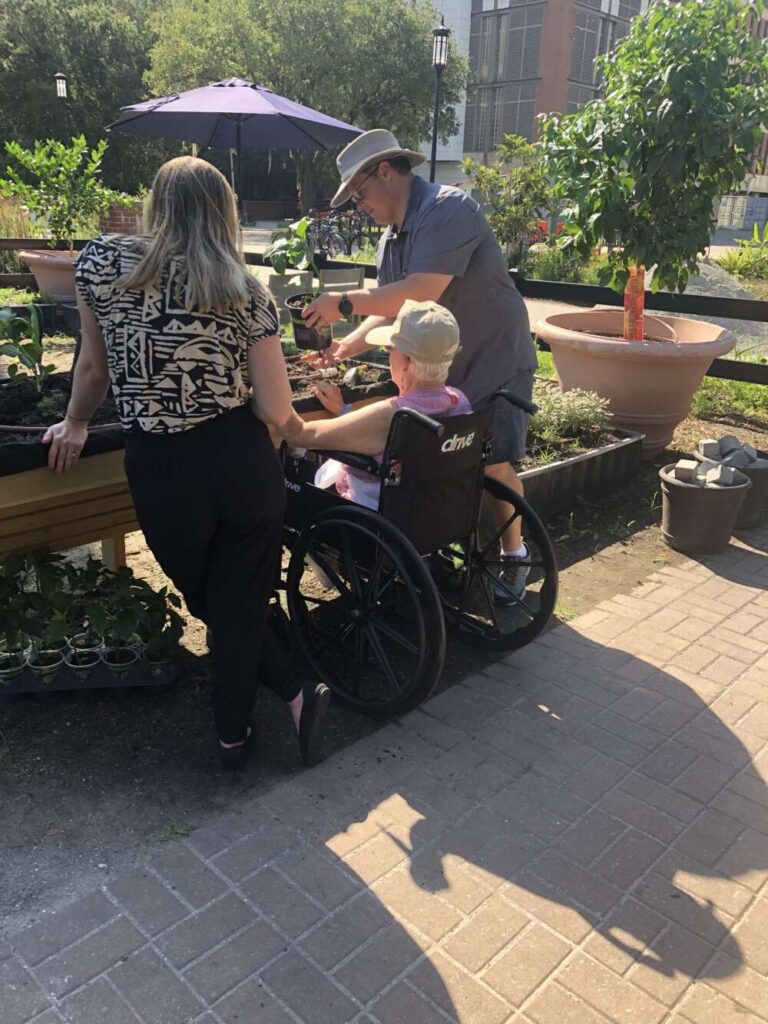Outreach is a key component of Bee City USA and Bee Campus USA certification, and events are a great way to fulfill that requirement and draw together your community around a shared goal of happy pollinators. We put together this checklist to help make your activities more inclusive and successful.
Having things like a car, free time, and the internet might seem a given, but access to these seemingly straightforward items varies from one person to another. Additionally, one in four adults in the United States live with some type of disability, be it mobility, cognition, sensory, or other health considerations. While not every event can cater to everyone, considering the needs of your audience and making some simple changes will remove barriers to participation and allow you to connect with and engage the broadest cross-section of your community. We hope that the checklist below will help you create the best experience.
Do you have suggestions of other ways to make events more accessible? Share them in the comments!
Planning questions
All events:
- Day and time: Is the day of the week manageable for your audience (e.g., business hours vs. weekends)? Is the time of day appropriate for the target audience (folks with kids, people who have to take public transportation etc.)?
- Duration: Is the length of time manageable for your audience, while still covering the necessary topics? Are long enough breaks provided to accommodate those with different mobilities?
- Date: Is the date on or near a holiday? Your audience may have obligations that will take priority. Is the season reasonable for the audience? Attendee may want to avoid dark, winter bus commutes.
- Cost: Is there a financial barrier for your instructors or attendees? Can you offer scholarships or honorariums?
- Co-host policies: If your event is co-hosted, what accessibility policies or accommodations do your co-hosts have in place? Do they meet the needs of your audience?
Virtual events:
- Technology access: For online events, is your audience likely to have internet access and equipment? Could you record the event for later viewing? Consider hosting a hybrid event in an easily accessible location, such as a library.
In-person events:
- Building: Is the building Americans with Disabilities Act (ADA) compliant? Is it affiliated with a group that meets your group’s Diversity, Equity and Inclusion (DEI) values? Is signage to event space clearly visible?
- Field conditions: What will the distance, terrain, temperatures, seating, and facility access be like?
- Room: Can tables/seating accommodate wheelchairs? Is there sufficient lighting and acoustics for low hearing/vision? Are microphones available for speakers and audience members with questions?
- Transportation: Is your event near a population center? Can it be reached via public transportation? Is the path from the transport stop accessible for those with wheelchairs or low mobility? Is there free and ample parking?
- Restrooms: Are there clean and ADA accessible restrooms?
- Dietary: Is there free and clean water onsite? If food is provided, does it meet dietary preferences and label ingredients / allergens?
Event marketing
- Describe event conditions: What can you share about event accessibility? For example, does a field event have a half-mile walk over uneven terrain and no restrooms? Which bus line reaches the event venue? Tell your participants!
- Include accommodation requests: Event sign-up materials should clearly state: “To request a reasonable accommodation or for inquiries about accessibility, please contact (name, email, phone).”
- Make signups easy: Consider a phone-in registration option for audiences with limited internet access.
- Leverage networks: When possible, coordinate with co-hosts, venues, partners, and others to advertise on new networks. Establishing relationships with groups for underserved audiences can make your events more accessible.
- Use multiple channels: Seeking out channels and platforms beyond those you usually use helps you reach new audiences—do more than just announce it on your Facebook page! Consider how your audience gets their information, such as community news, interest groups, print fliers, and local TV or radio. (As you learn your area and audience, this gets easier!)
- Create accessible materials
During and after the event
All events:
- Practice good disability etiquette.
- You may ask discreetly before and after the event if an attendee needing accommodations has everything they require. Do not “out” a disability or draw unwanted attention to the individual.
Virtual events:
- Interpretation: Describing visuals, reading comments aloud, “pinning” speakers AND interpreters, and other strategies can help participants who are blind, deaf, have cognitive disabilities, and/or are nonverbal.
- Digital assets: Record your event with closed captions on and make it available for viewing. When possible, confirm that notes, slides and publications are available and meet accessibility standards.
- For more guidance, view RespectAbility’s Ensuring Virtual Events Are Accessible for All






